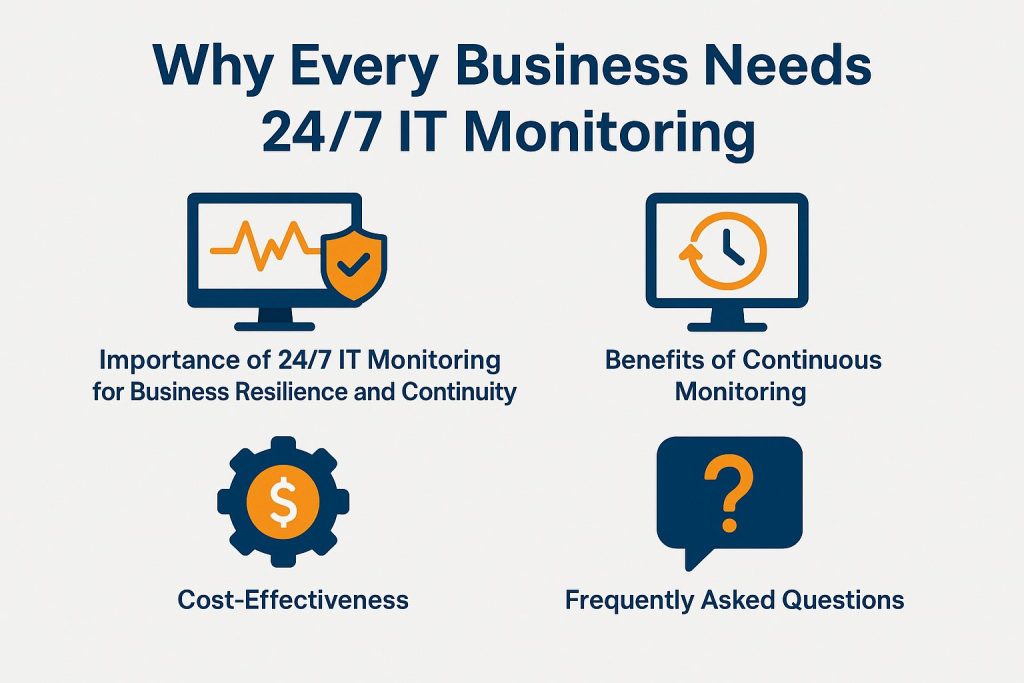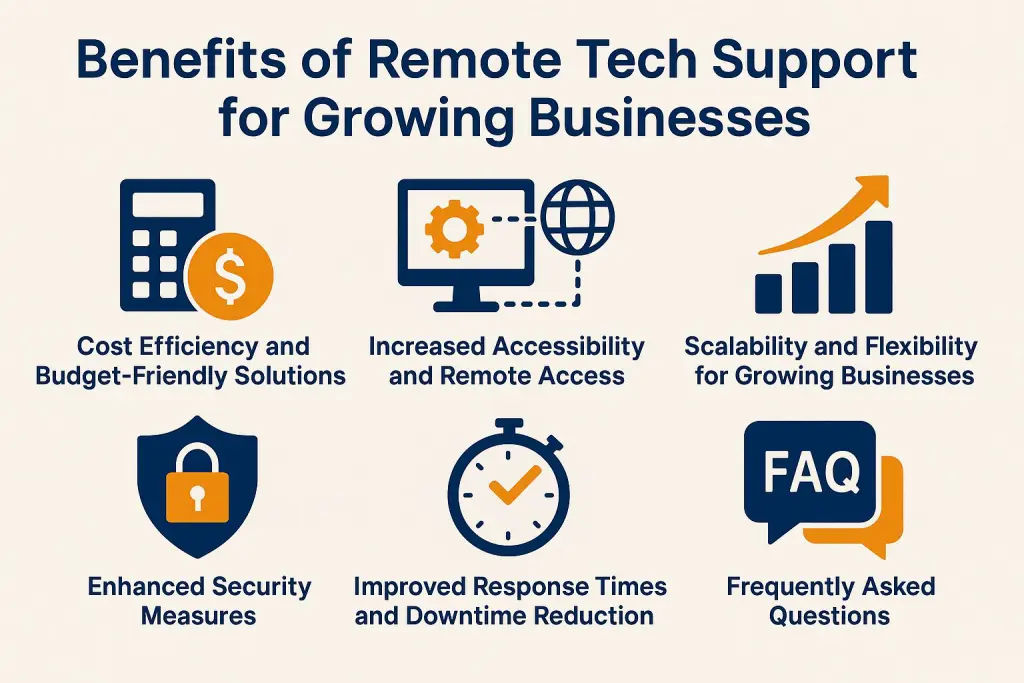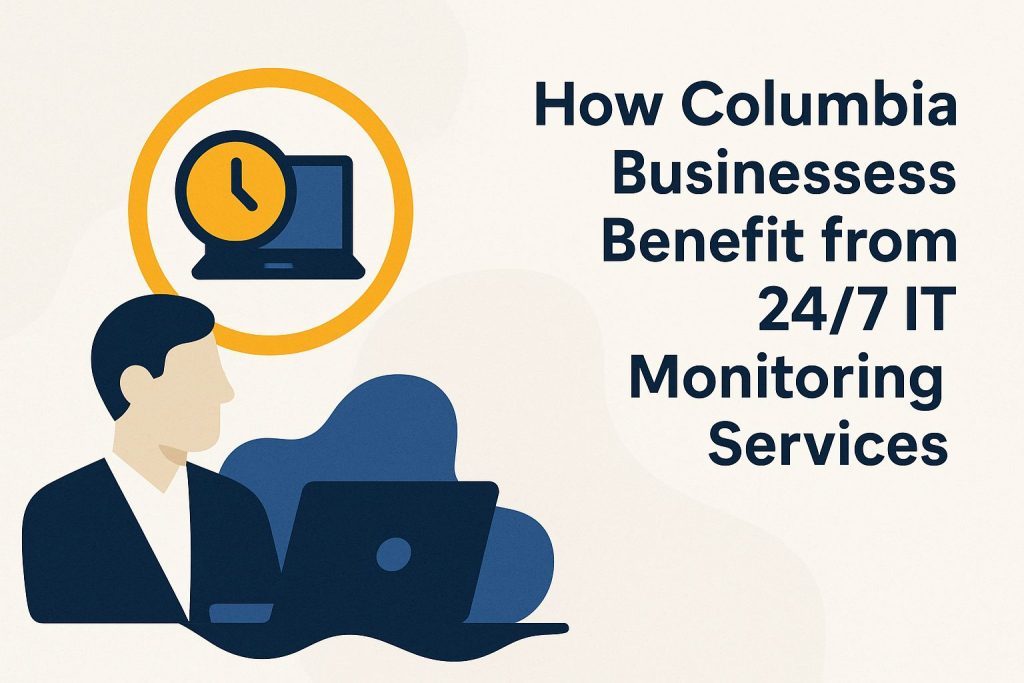Why 24/7 Remote Monitoring Is Critical for Business Continuity
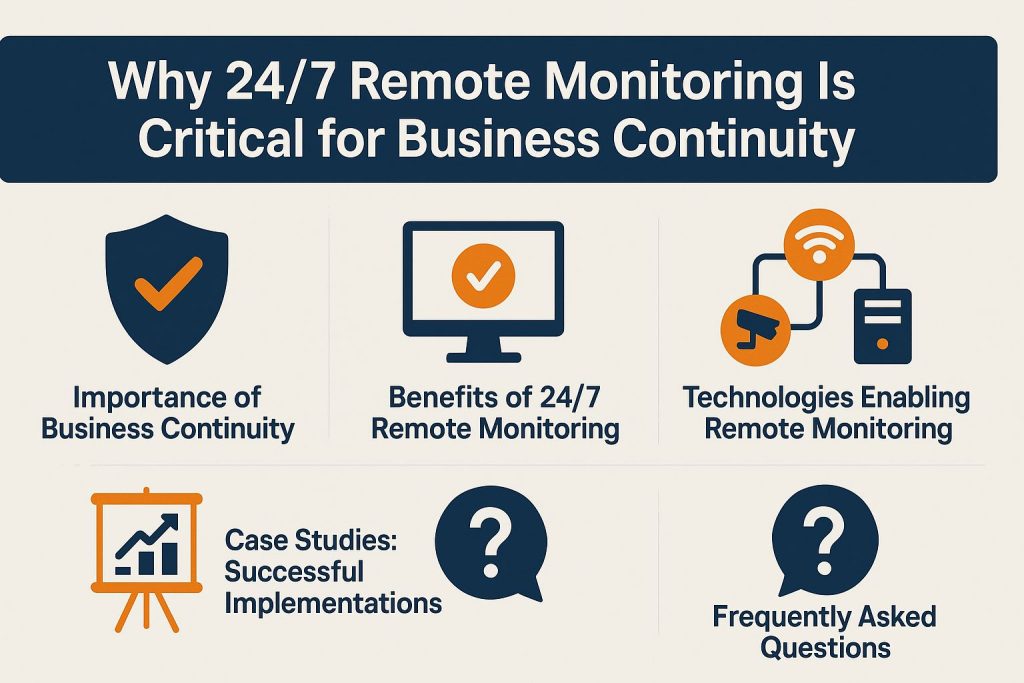
Unexpected disruptions can jeopardize critical systems. Implementing 24/7 remote monitoring safeguards business continuity. This oversight enhances proactive issue detection. It minimizes downtime and helps organizations stay resilient. By exploring the technologies that facilitate this monitoring and showcasing successful case studies, the significance of around-the-clock vigilance in safeguarding business operations becomes unmistakably clear.
Importance of Business Continuity
Business continuity ensures that essential functions can persist during and after a disaster, thereby safeguarding against potential disruptions. This concept is closely tied to effective IT disaster recovery planning, which provides businesses with the resilience needed to withstand various challenges. Learn more about how comprehensive planning can fortify your business against unexpected events.
Defining Business Continuity
Business continuity refers to the proactive planning and preparation that enables a company to maintain operations despite unexpected disruptions.
Key components of business continuity planning are risk assessment, incident management strategies, and compliance with standards.
The process begins with identifying potential risks, such as natural disasters or cyber threats. Then, develop strategies such as backup systems, remote work protocols, and endpoint protection. It is crucial to ensure compliance with relevant regulations, as failure to do so can result in significant penalties, impacting stakeholder trust and business sustainability.
Statistics indicate that about 70% of businesses without a continuity plan fail within a year after a major disaster. This highlights the importance of proactive planning for operational resilience and business agility.
Benefits of 24/7 Remote Monitoring
Implementing 24/7 remote monitoring significantly enhances operational resilience. It allows immediate incident responses, reduces downtime, and ensures service continuity.
This proactive approach ensures that any issues are addressed swiftly, thereby maintaining continuity, operational efficiency, and service availability in operations. Related insight: Proactive IT Monitoring for Growth in Columbia
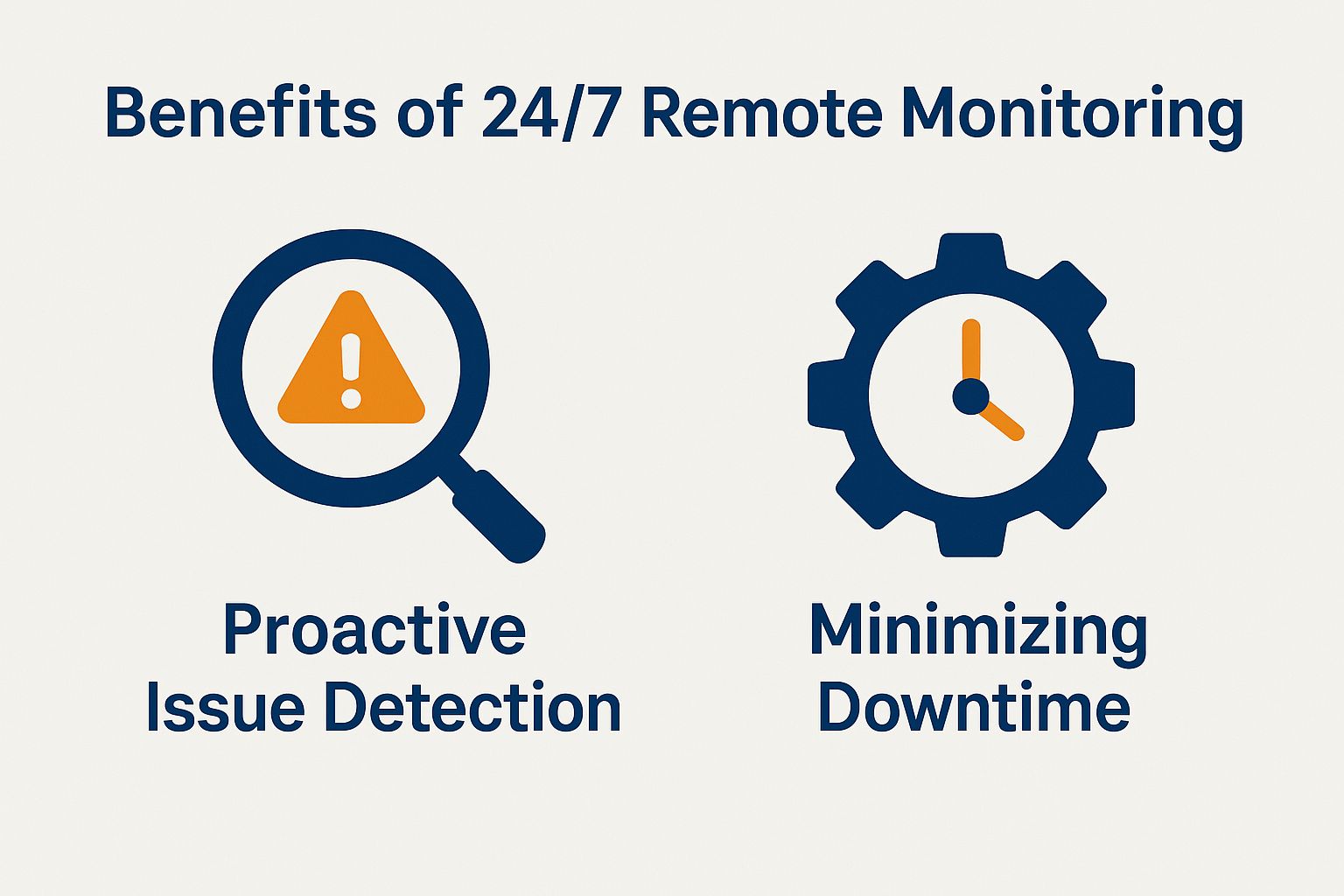
Proactive Issue Detection
Proactive issue detection through remote monitoring helps identify threats and system vulnerabilities before they become serious problems. This enhances system reliability and network security.
To use tools like Zabbix and New Relic effectively, first identify critical metrics such as CPU usage, memory use, and response times.
For example, within Zabbix, one can create triggers for metrics that exceed 80% CPU usage or response times that surpass 200 milliseconds. Alerts can be configured to send notifications via email or SMS, ensuring an immediate response.
In the case of New Relic, utilizing the Application Performance Monitoring (APM) feature allows for the establishment of custom performance thresholds and the receipt of notifications when metrics deviate from expected norms.
This proactive approach allows early detection of issues. It minimizes downtime and maintains system performance.
Minimizing Downtime
Minimizing downtime through effective remote monitoring enhances productivity, ensures service availability, and improves customer satisfaction.
Implementing a robust monitoring solution is essential; tools such as Datadog and Nagios provide real-time insights and alerts regarding system performance. For example, Company X leveraged Datadog’s monitoring capabilities for IT management and network reliability, resulting in a 40% reduction in downtime by swiftly identifying network issues.
Conduct regular audits of hardware and software. Employ redundant systems and failover protocols. These actions safeguard against unexpected failures and enhance business resilience. By fostering a proactive monitoring culture, organizations can not only respond to problems quickly but also anticipate potential issues before they escalate.
Technologies Enabling Remote Monitoring
Remote monitoring uses cloud solutions, IoT devices, and predictive analytics. A notable example is AWS CloudWatch, a cloud monitoring tool that enables users to monitor applications in real-time by aggregating performance metrics and logs from various sources.
When used with IoT sensors, these technologies collect data from environments like server rooms. This includes temperature and humidity levels. This ensures data security and integrity. Predictive analytics uses this data to predict issues, allowing for proactive maintenance and, essentially, 24/7 IT monitoring-boosting efficiency and minimizing downtime.
Companies like Netflix use this technology to improve their streaming services. This ensures uptime and enhances user experience through constant monitoring and prompt adjustments.
Case Studies: Successful Implementations
Examining real-world case studies highlights how companies effectively implemented remote monitoring and enterprise monitoring to enhance operational efficiency and business resilience.
One notable example involves a manufacturing firm that adopted Nagios for real-time monitoring of its production line, resulting in a 30% reduction in machine downtime. Another significant case features a large retailer utilizing Datadog to track application performance, which led to a 50% improvement in their incident response time.
Key takeaways for businesses are to invest in strong monitoring tools and regularly review performance data. By taking these steps, businesses can not only identify issues swiftly but also optimize their overall operations for improved results.
Frequently Asked Questions
What is 24/7 remote monitoring and why is it critical for business continuity?
24/7 remote monitoring constantly checks your business operations and infrastructure. It provides real-time updates, alerts, and notifications. It is critical for business continuity as it allows you to identify and address issues before they turn into major problems, ensuring uninterrupted business operations.
How does 24/7 remote monitoring help in maintaining business continuity?
This approach helps your business operate smoothly. It prevents interruptions and maintains productivity.
What are the benefits of implementing 24/7 remote monitoring for business continuity?
Benefits of 24/7 remote monitoring include less downtime, more productivity, proactive problem-solving, better system performance, and cost savings. It also provides peace of mind knowing that your business is constantly monitored and taken care of.
Can 24/7 remote monitoring be customized to fit the specific needs of my business?
Yes, 24/7 remote monitoring can be tailored to your business needs. The system can be tailored to monitor and track specific aspects of your business operations and infrastructure, ensuring that it is optimized for your unique requirements.
Is 24/7 remote monitoring suitable for all types and sizes of businesses?
Yes, 24/7 remote monitoring is suitable for all types and sizes of businesses. Every business can benefit from constant monitoring of their operations and infrastructure, regardless of the industry, size, or location. The system can be tailored to fit the specific needs of any business, making it a valuable tool for business continuity.
How can I ensure that my business is constantly monitored through 24/7 remote monitoring?
To ensure constant monitoring, partner with a managed service provider that offers 24/7 remote monitoring. They will set up and maintain the system, providing you with real-time updates and alerts, and addressing any issues that may arise. This allows you to focus on running your business while having the assurance of continuous monitoring and support.
